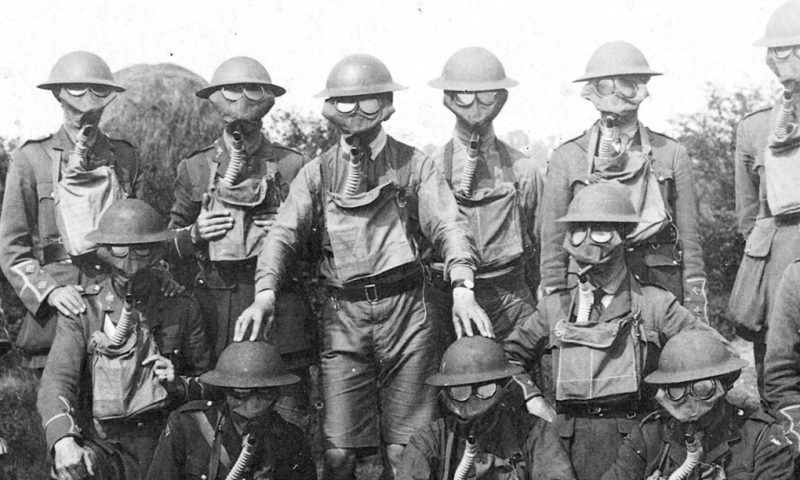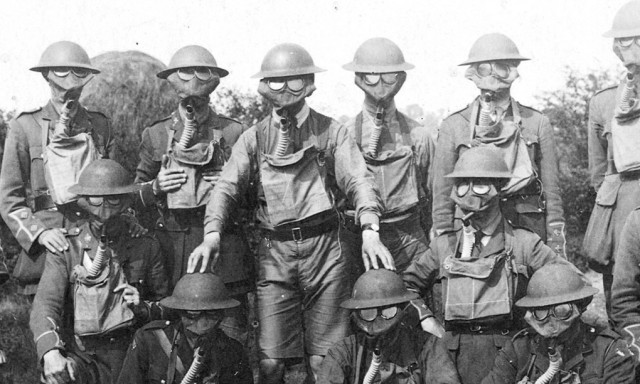Chemical warfare began one hundred years ago during World War One and was first used by the Germans fighting against the French on Flanders Field.
Science was still in an experimental stage and many scientists would use themselves to test their experiments. It was a race to develop chemical weapons and the scientists would sometimes even expose themselves to dangerous chemical concoctions to see what the effects would be. Some were even killed during the experiments.
In the first attack, German forces discharged around 150 tonnes of chlorine gas in April 1915. The German soldiers wore gas masks so that they could release the gas and then go on to the battlefield. The French soldiers of course did not know the gas was coming, and had no masks among them. Around 1,000 French troops lost their lives in this first attack. Even though not long before the attack a German deserter had been armed with a mask and had warned them of what might come.
Some soldiers could tell by the smell of the gas that it was chlorine and quickly got access to water and cloths, which could neutralise its effects. Other remedies included sodium bicarbonate and even urine.
When two days later the Germans released another chemical gas attack, Canadian troops had access to buckets of water and cloths to combat it. A nearby convent of nuns had also prepared thousands of mouth covers made of lint, which when dipped in water meant that the soldiers could breath and prevent the chlorine gas having an effect.
The British Army immediately tasked George Pollitt a chemist with writing the first official instructions for using the damp cloths for the troops. Meanwhile the government were busy putting into production masks that the troops could wear to protect them from the lethal gas.
In the meantime, thousands of makeshift masks were sent to the frontline. A pad respirator was also put into production, designed by a professor at Imperial College, London.
During the many experiments, volunteers were asked to stand in a replica trench as samples of gas were released over them. Other scientists would create chemical mixtures in a basin and then trial face masks over their own mouths by leaning over the chemicals, The Guardian reports.
One soldier on the frontline realised that some of the face masks sent to them just weren’t going to work. So, a chemist himself, Leslie Barley began to work on a respirator in the laboratory of a local French school. He successfully developed a mask that he wore in a room full of chlorine. 80,000 of his masks were produced by the local villagers, along with crop sprayers filled with chlorine that they could blast at the enemy troops.

